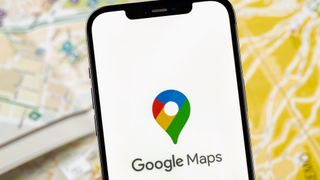Mobile Apps
Latest about Mobile Apps

Waze is testing a big traffic upgrade that will make your life easier
By Josh Render published
In testing right now

Google Maps just made it a lot easier to find your car — and it's coming to iPhones first
By Scott Younker last updated
Google Maps will automatically save your parking location on iOS and you can mark your car with custom icons.

I’m tired of notifications interrupting my iPhone games — here’s how I set things up to play in peace
By Philip Michaels published
Nothing takes you out of a game like an incoming notification. Here's how I've set up my phone for distraction-free gaming with two built-in iOS tools.

Google Maps is getting 4 big upgrades for millions — here's all the new features
By Scott Younker last updated
Google Maps is getting four new features designed to save time and help you find new experiences during the holidays.

You can finally schedule tasks directly in Google Calendar — here's how
By Kaycee Hill published
Learn how to schedule tasks on Google Calendar and make the most of this game-changing feature.

I tested Google Maps Live View vs Apple Maps Guide Me — which map app has the better AR navigation?
By Richard Priday published
Apple Maps and Google Maps both have AR navigation mode, and after testing them, I have the highs and lows of using both, plus an overall favorite.

I use an iPhone but this new Google Maps feature just might convince me to switch to a Pixel — here's why
By Scott Younker last updated
Google Maps has a new mode that reduces battery usage in case your phone is low. But it's not available for every device yet - here's how to know when (and if) it's coming to your phone.

Google Maps is getting a huge upgrade for millions — and it could be a real lifesaver
By Scott Younker last updated
Google Maps may soon introduce a power-saving mode that could keep you traveling longer.
Here at Tom’s Guide our expert editors are committed to bringing you the best news, reviews and guides to help you stay informed and ahead of the curve!


